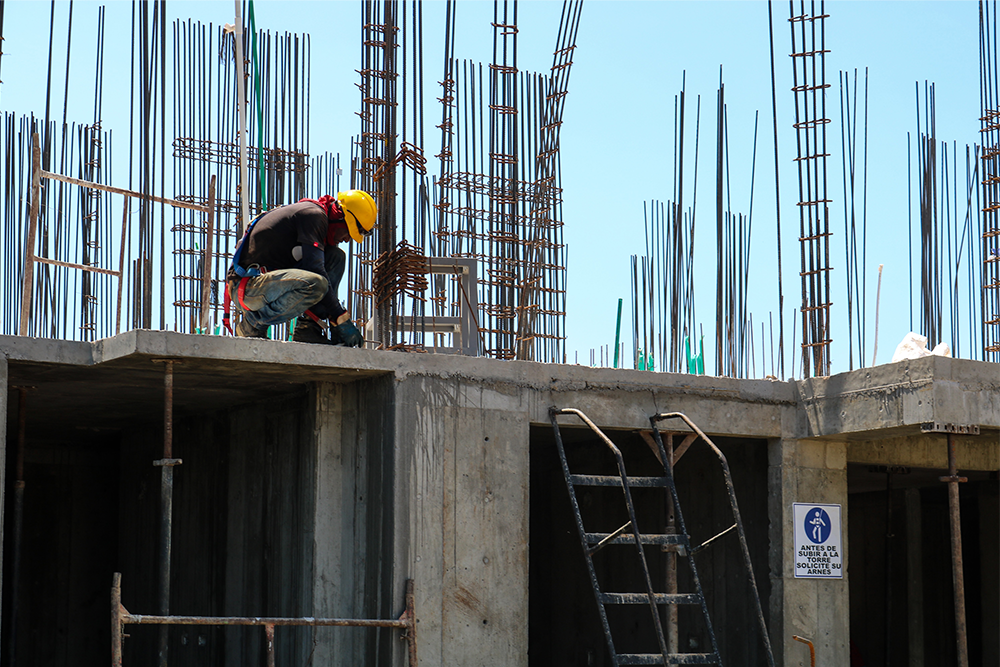As inflation drives up infrastructure delivery costs, consider this advice from the Global Infrastructure Hub

Infrastructure delivery costs are expected to exceed economy-wide inflation due to rising commodity and energy prices.
Research from Arcadis that pre-dates the war in Ukraine shows prices were already escalating and once the impact of the war in Ukraine is factored in, costs for energy and materials are likely to be much higher.
In India, for example, the cement price has been volatile, with a cumulative rise of 60–70% since the start of the pandemic.
In the second quarter of 2021, aluminium rose by almost 40% from pre-pandemic levels, while the price of iron ore more than doubled, causing steel costs to hit historic highs.
Copper prices also rose by 70%, timber prices tripled, and the US Materials Cost Index rose by 31% in 2021.
Energy costs can also contribute significantly to infrastructure delivery costs, with energy-intensive manufacturing accounting for 25–38% of total costs in cases where materials like cement and blast furnace steel are used (see Figure 1).
Inevitably, these pricing pressures, together with a tightening labour market, will adversely impact construction costs across the board.


Figure 1: Contribution of energy costs to construction materials prices and impact of recent energy price increase (quantified in % increase on product price) Source
A new report from the Australian Constructors Association perfectly captured the scale of the challenge now confronting the industry:
“Double-digit inflation for an industry with single-digit profit margins is a recipe for disaster, but more so for one that is required to lock in prices for projects that can take years to construct.” Australian Constructors Association
So, with record inflation and material costs fluctuating widely, how can governments and contractors manage cost uncertainty – whether a contract is already in place, negotiations are ongoing, or the tender process is still underway?
For existing contracts
Contracts signed pre-pandemic and before the emerging inflation surge may need to be re-evaluated or re-negotiated, considering the sharp rise in construction costs. This will depend on whether the contract is long-term (such as a PPP) or short-term (such as an EPC), and the type of fluctuation mechanisms in the contract.
Either way, recent rises in energy and construction costs are so high that it is unlikely that existing price revision clauses alone will be sufficient to address the shortfall. This is because these clauses are usually based on a construction index that may not be reflective of the current situation.
Outside of price revision clauses, a party may look to other contract provisions, such as force majeure, to see if its performance under the contract could be excused. However increased costs alone are not enough to constitute such an event (three conditions must not have been met or fulfilled) and the typical recourse is an extension of time, not an increase in contract price.
When unforeseen economic pressures (such as inflation) weigh excessively on contract performance by rapidly escalating construction costs, then relief may be granted to the affected party through other means.
This is the case in French administrative law where the imprévision doctrine (hardship doctrine, which differs from the impracticability of performance doctrine in the US) allows a contract to be renegotiated in the case of ‘hardship’.
In March, the French Prime Minister published a circulaire outlining a series of recommendations to support public buyers in the re-negotiation of public contracts. The public authorities encourage buyers to take this price increase into account and agree to modify certain contractual provisions in their contracts (such as extension of deadlines and non-application of late delivery penalties) and to negotiate unforeseen circumstances amendments for existing contracts.
GI Hub’s PPP Contract Management Tool (in Section 4.2) provides guidance on managing the renegotiation of a PPP contract after financial close, particularly in relation to economic re-balancing.
For future contracts
When considering future contracts, prioritising effective collaboration and appropriate risk allocation can help mitigate future cost shocks in infrastructure delivery.
At present, 85% of projects are competitively tendered, meaning that negotiated and collaborative approaches to tendering projects are still relatively rare. In the current context, inflexible approaches in contractual clauses and, more specifically, in price revision clauses, might lead to unsuccessful tendering procedures.
Instead, when uncertainty is high, parties should take a more collaborative approach to co-creating new mechanisms to address cost escalation and/or allow projects to be de- or re-scoped as needed to ensure delivery within budget.
Collaborative and flexible management of contracts with infrastructure delivery providers will continue to be the most effective way for governments to manage risk and uncertainty of any type.
More broadly, the current construction cost escalation reminds us of the importance of an appropriate risk allocation in construction contracts, with “88% of contractors agree[ing]that inappropriate risk allocation is one of the main impediments to reducing construction costs.”
GI Hub’s Risk Allocation Tool serves as a reference guide for governments on the appropriate allocation of project risk in a variety of infrastructure subsectors.
The inflation risk is usually borne to some extent by the private sector, but some matrices point identify inflation as a circumstance-dependant risk that can be mitigated by the contracting authority in case of major fluctuations.
In fact, in some regions that have experienced long periods of high inflation – for example, Latin America – inflation risks for construction are often shared between the contractor and the owner, rather than being fully taken on by contractors.
GI Hub’s Improving Delivery Models tool provides guidance and case studies on costing approaches at the early stage of decision-making and explores several improvements that can help tackle the rising costs of construction materials:
- Cooperation: Perform early market sounding with potential contractors, consultants, and suppliers. A close engagement with the market can inform the risk profile and draw attention of public buyers on key market issues. More broadly, it is crucial to foster a cooperative mindset between the contracting authority and the private partner.
- Efficiency: Greater flexibility needs to be applied in setting infrastructure budgets by including properly funded contingencies and estimating final costs in ranges rather than fixed amounts to better consider risk and uncertainty.
- Risk: Careful consideration should be given before seeking to transfer risks to the contractor when uncertainty is high. Under certain circumstances, collaborative contracting, and target price contracts might be better solutions.








